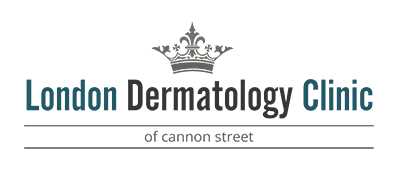
Methods for Birthmark Removal
Birthmarks, true to their name, are skin discolorations that emerge at birth and typically endure. Manifesting in hues of red, pink, purple, or brown, these patches vary in size and can develop on any area of the body.
Causes of Birthmarks
Vascular birthmarks, caused by anomalies in the skin’s blood vessels, lead to the manifestation of red, pink, or purple discolorations. These variations occur due to irregularities in the vessel structures during development. Conversely, brown pigmented birthmarks or moles are a result of melanin clusters within the skin, leading to distinct patches that differ in coloration due to the concentrations and distributions of this pigment. Melanin, the body’s natural pigment, can sometimes cluster or distribute unevenly, resulting in these unique pigmented birthmarks. The specific triggers or reasons for these melanin concentrations are still being studied by researchers in the field.
Natural Remedies for Birthmark Removal
Lemon Juice Application: Historically utilized to fade freckles and lighten hair, lemon juice can also be applied to birthmarks. Dab a few drops on the affected area, leaving it for at least 20 minutes, then rinse with warm water. Repeat this process thrice daily until the birthmark lightens.
Olive Oil Treatment: Serving as a natural moisturizer, olive oil can soften and condition dry skin. Consistent use is suggested to potentially improve the birthmark’s appearance. Follow the same application process as with lemon juice.
Varieties of Birthmarks
Port Wine Stain (Capillary Malformation Birthmarks): These wine-colored patches arise from abnormal blood vessels, primarily found on the face, back, and chest. They tend to be permanent and can intensify over time.
Salmon Patch Birthmarks: Common vascular birthmarks appearing as faint pink or red patches on a baby’s face or neck. They usually fade within months, but some may take years to disappear.
Strawberry Marks (Infantile Haemangiomas): Raised, mole-like, pink, red, or purple marks often affecting newborns. They typically vanish by age seven, expanding before diminishing. Medical attention might be necessary for some cases.
Café-au-lait Spots: Flat, coffee-colored skin patches, usually harmless. However, if a child has more than six before age five, it could indicate a genetic condition called neurofibromatosis, requiring medical consultation.
Mongolian Spots: Bluish-grey marks more common in babies with darker skin tones. Typically found on the back or buttocks, they usually fade before the child turns four.
Congenital Moles (Congenital Melanocytic Naevi): Large, black or brown marks present from birth. They are common and might change in appearance, requiring attention if their shape or color changes significantly.
For any concerns regarding changes in congenital moles, feel free to contact our London dermatologists.
FAQ
Can birthmarks be removed entirely?
While some may fade, complete removal isn’t always guaranteed. Consult a dermatologist for options.
Are birthmarks hereditary?
Some types can have a hereditary link, but not all birthmarks are passed down through genes.
Do birthmarks cause health issues?
Most are harmless, but certain types might indicate underlying conditions; regular check-ups are advisable.
Are natural remedies safe for all birthmarks?
It’s essential to assess skin sensitivity and consult a healthcare professional before using any remedy.
Can birthmarks change over time?
Yes, some may alter in size, color, or texture, especially during hormonal changes like puberty or pregnancy.
Are all birthmarks present at birth?
While most appear at birth, some types, like café-au-lait spots, can emerge later in childhood.


